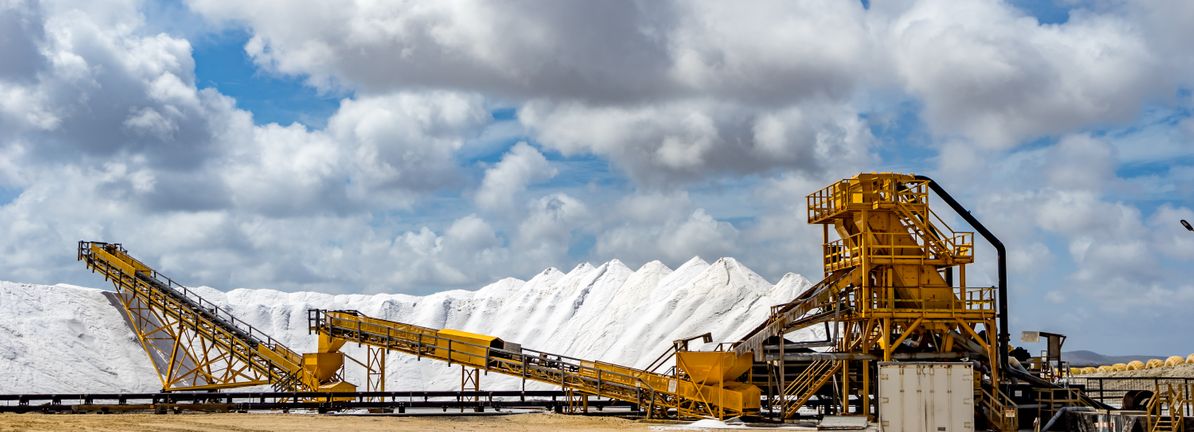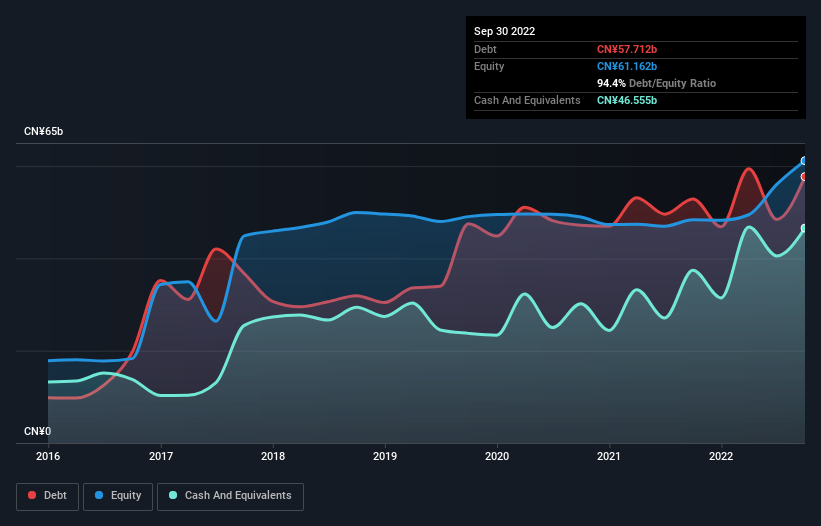
Legendary fund manager Li Lu (who Charlie Munger backed) once said, ‘The biggest investment risk is not the volatility of prices, but whether you will suffer a permanent loss of capital.’ So it seems the smart money knows that debt – which is usually involved in bankruptcies – is a very important factor, when you assess how risky a company is. We note that CMOC Group Limited (HKG:3993) does have debt on its balance sheet. But the real question is whether this debt is making the company risky.
Why Does Debt Bring Risk?
Generally speaking, debt only becomes a real problem when a company can’t easily pay it off, either by raising capital or with its own cash flow. Part and parcel of capitalism is the process of ‘creative destruction’ where failed businesses are mercilessly liquidated by their bankers. However, a more usual (but still expensive) situation is where a company must dilute shareholders at a cheap share price simply to get debt under control. Having said that, the most common situation is where a company manages its debt reasonably well – and to its own advantage. The first thing to do when considering how much debt a business uses is to look at its cash and debt together.
Check out our latest analysis for CMOC Group
What Is CMOC Group’s Debt?
The image below, which you can click on for greater detail, shows that at September 2022 CMOC Group had debt of CN¥57.7b, up from CN¥52.9b in one year. On the flip side, it has CN¥46.6b in cash leading to net debt of about CN¥11.2b.

How Healthy Is CMOC Group’s Balance Sheet?
We can see from the most recent balance sheet that CMOC Group had liabilities of CN¥56.5b falling due within a year, and liabilities of CN¥53.2b due beyond that. On the other hand, it had cash of CN¥46.6b and CN¥7.19b worth of receivables due within a year. So its liabilities outweigh the sum of its cash and (near-term) receivables by CN¥55.9b.
This deficit isn’t so bad because CMOC Group is worth a massive CN¥96.7b, and thus could probably raise enough capital to shore up its balance sheet, if the need arose. But we definitely want to keep our eyes open to indications that its debt is bringing too much risk.
We use two main ratios to inform us about debt levels relative to earnings. The first is net debt divided by earnings before interest, tax, depreciation, and amortization (EBITDA), while the second is how many times its earnings before interest and tax (EBIT) covers its interest expense (or its interest cover, for short). Thus we consider debt relative to earnings both with and without depreciation and amortization expenses.
CMOC Group’s net debt is only 0.63 times its EBITDA. And its EBIT easily covers its interest expense, being 23.1 times the size. So you could argue it is no more threatened by its debt than an elephant is by a mouse. And we also note warmly that CMOC Group grew its EBIT by 11% last year, making its debt load easier to handle. There’s no doubt that we learn most about debt from the balance sheet. But ultimately the future profitability of the business will decide if CMOC Group can strengthen its balance sheet over time. So if you want to see what the professionals think, you might find this free report on analyst profit forecasts to be interesting.
Finally, a business needs free cash flow to pay off debt; accounting profits just don’t cut it. So we clearly need to look at whether that EBIT is leading to corresponding free cash flow. Looking at the most recent three years, CMOC Group recorded free cash flow of 25% of its EBIT, which is weaker than we’d expect. That weak cash conversion makes it more difficult to handle indebtedness.
Our View
On our analysis CMOC Group’s interest cover should signal that it won’t have too much trouble with its debt. However, our other observations weren’t so heartening. For instance it seems like it has to struggle a bit to convert EBIT to free cash flow. When we consider all the factors mentioned above, we do feel a bit cautious about CMOC Group’s use of debt. While debt does have its upside in higher potential returns, we think shareholders should definitely consider how debt levels might make the stock more risky. We’d be motivated to research the stock further if we found out that CMOC Group insiders have bought shares recently. If you would too, then you’re in luck, since today we’re sharing our list of reported insider transactions for free.
At the end of the day, it’s often better to focus on companies that are free from net debt. You can access our special list of such companies (all with a track record of profit growth). It’s free.
Valuation is complex, but we’re helping make it simple.
Find out whether CMOC Group is potentially over or undervalued by checking out our comprehensive analysis, which includes fair value estimates, risks and warnings, dividends, insider transactions and financial health.
Have feedback on this article? Concerned about the content? Get in touch with us directly. Alternatively, email editorial-team (at) simplywallst.com.
This article by Simply Wall St is general in nature. We provide commentary based on historical data and analyst forecasts only using an unbiased methodology and our articles are not intended to be financial advice. It does not constitute a recommendation to buy or sell any stock, and does not take account of your objectives, or your financial situation. We aim to bring you long-term focused analysis driven by fundamental data. Note that our analysis may not factor in the latest price-sensitive company announcements or qualitative material. Simply Wall St has no position in any stocks mentioned.
Source link
